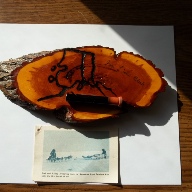Interior Alaska includes all the cities, towns and villages listed on the left. Click a name for more information.
The interior is the largest region of Alaska, much of it uninhabited wilderness. Denali (Mt. McKinley), the highest point in North America, is located here. Fairbanks is the largest city in the Interior
Interior Alaska experiences extreme seasonal temperature variability. Winter temperatures in Fairbanks average -12 °F (-24 °C) and summer temperatures average +62 °F (+17 °C). Temperatures there have been recorded as low as -65 °F (-54 °C) in mid-winter, and as high as +99 °F (+37 °C) in summer. Both the highest and lowest temperature records for the state were set in the Interior, with 100 °F (38 °C) in Fort Yukon and -80 °F (-64 °C) in Prospect Creek. Temperatures within a given winter are highly variable as well; extended cold snaps of forty below zero can be followed by unseasonable warmth with temperatures above freezing due to chinook wind effects.
Summers can be warm and dry for extended periods creating ideal fire weather conditions. Weak thunderstorms produce mostly dry lightning, sparking wildfires that are mostly left to burn themselves out as they are often far from populated areas. The 2004 season set a new record with over 6,600,000(26,700 km2) burned.
The average annual precipitation in Fairbanks is 11.3(28.7). Most of this comes in the form of snow during the winter. Most storms in the interior of Alaska originate in the Gulf of Alaska, south of the state, though these storms often have limited precipitation due to a rain shadow effect caused by the Alaska Range.
On clear winter nights, the aurora borealis can often be seen dancing in the sky. Like all subarctic regions, the months from May to July in the summer have no night, only a twilight during the night hours. The months of November to January have little daylight. Fairbanks receives an average 21 hours of daylight between May 10 and August 2 each summer, and an average of less than four hours of daylight between November 18 and January 24 each winter.
The interior of Alaska is largely underlined by discontinuous permafrost, which grades to continuous permafrost as the Arctic Circle is approached.
Interior Alaska includes all the cities, towns and villages on the left. Click a name to see more information.
This information from Wikipedia: For more info. go to:
http://en.wikipedia.org/wiki/Anchorage,_Alaska




